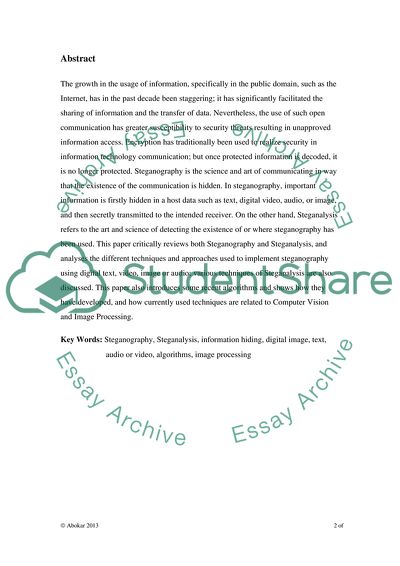Cite this document
(Digital Crime Investigation and Features of Steganography and Coursework Example | Topics and Well Written Essays - 2250 words, n.d.)
Digital Crime Investigation and Features of Steganography and Coursework Example | Topics and Well Written Essays - 2250 words. https://studentshare.org/information-technology/1805175-digital-crime-investigation
Digital Crime Investigation and Features of Steganography and Coursework Example | Topics and Well Written Essays - 2250 words. https://studentshare.org/information-technology/1805175-digital-crime-investigation
(Digital Crime Investigation and Features of Steganography and Coursework Example | Topics and Well Written Essays - 2250 Words)
Digital Crime Investigation and Features of Steganography and Coursework Example | Topics and Well Written Essays - 2250 Words. https://studentshare.org/information-technology/1805175-digital-crime-investigation.
Digital Crime Investigation and Features of Steganography and Coursework Example | Topics and Well Written Essays - 2250 Words. https://studentshare.org/information-technology/1805175-digital-crime-investigation.
“Digital Crime Investigation and Features of Steganography and Coursework Example | Topics and Well Written Essays - 2250 Words”. https://studentshare.org/information-technology/1805175-digital-crime-investigation.


